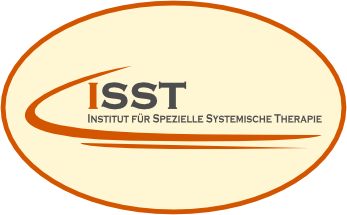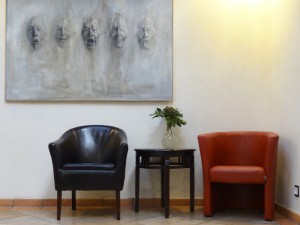Myofunctional therapy aims to treatment of musculary disfunctions caused by functional disorders in the regions of mouth and face. By activating und strengthening orofacial muscles particular influence is taken on positioning of the tongue, accurate swallowing patterns and leading breathing behaviours to usual nose breathing.
Myofunctional Therapy
From the work of Straub (1962) developed Daniel Garliner the myofunctional therapy (MFT). The program was published in 1964 (USA) and titled “Myofunctional therapy in dental practice: abnormal swallowing habits: diagnosis, treatment. A course of study for the dental practitioner and speech pathologist.”
Components of Myofunctional Therapy
Essential components of the MFT: Garliner focuses on the rest position of the tongue, making the case that the position is the origin of learning correct tongue movements and function. A correct tongue movement during swallowing should be developed through tongue tip positioning exercises in the physiological rest position and a systematic development of exercises for swallowing. Furthermore, his methods take into account the correction bad habits such as thumb sucking, nail biting and pacifier (soother) use as well as correcting mouth breathing behavior. Importantly, the training concentrates on exercises which strengthen the musculature, correct the tongue position, swallowing and train the subconscious.
ISST and the Myofunctional Therapy Work Team
Countless proposals, case studies, scientific documentation, exercise developments and publications about MFT emerged from many years of cooperation between Garlinier and the German Work Team for MFT (AK-MFT e.V.).
The directors of the ISST, Dr. Klaus Berndsen and Sabine Berndsen, supported from the beginning the creation of the AK-MFT e.V. and were until its end a part of the Board of Directors. In addition, they developed standards for myofunctional therapists and were responsible for the implementation of examinations to qualify MFT therapists. In 1989, Dr. Klaus and Sabina Berndsen organized the “9th European Congress for Myofunctional Therapy” and published a book of the congress’s theme in 1991.
Damages to the Myofunctional Therapy
Authors who wanted to take Garliner’s intellectual work for their own, using their own names to suggest that they had developed the therapy (i.e. MFT according to…), have damaged the implementation of MFT as a therapy. MFT suffered under reduced quality because wrong elements were added to the therapy, affecting scientific orientation and acceptance.
Myofunctional Therapy and Face Former Therapy at ISST
ISST, training in the original form of MFT is still offered as a therapy to physicians and therapists in professional seminars. Primarily, the therapy has been replaced by the newly developed Face Former Therapy of Berndsen/Berndsen. Internationally published clinical research investigations could show that the Face Former Therapy significantly improves desired results and achieve positive results quickly with very little effort.
Literature
Korbmacher, H.M., Schwan, M.; Berndsen, S.; Bull, J.; Kahl-Nieke, B.: Evaluation OF A New Concept OF Myofunctional Therapy in Children. The International Journal Of Orofacial Myology (IAOM, International Association Orofacial Myology). 30th Anniversary Edition, Volume XXX, Page 39-52, November 2004 Berndsen, K.; Berndsen, S.: Myofunktionelle Behandlungen und ihr Einfluss auf die sprachliche Artikulation. In: Schöler H.; Welling A. (Hrsg.) Sonderpädagogig der Sprache, Band 1, Handbuch Hogrefe Verl., Göttingen 2007, S. 866-890
BackSummary



